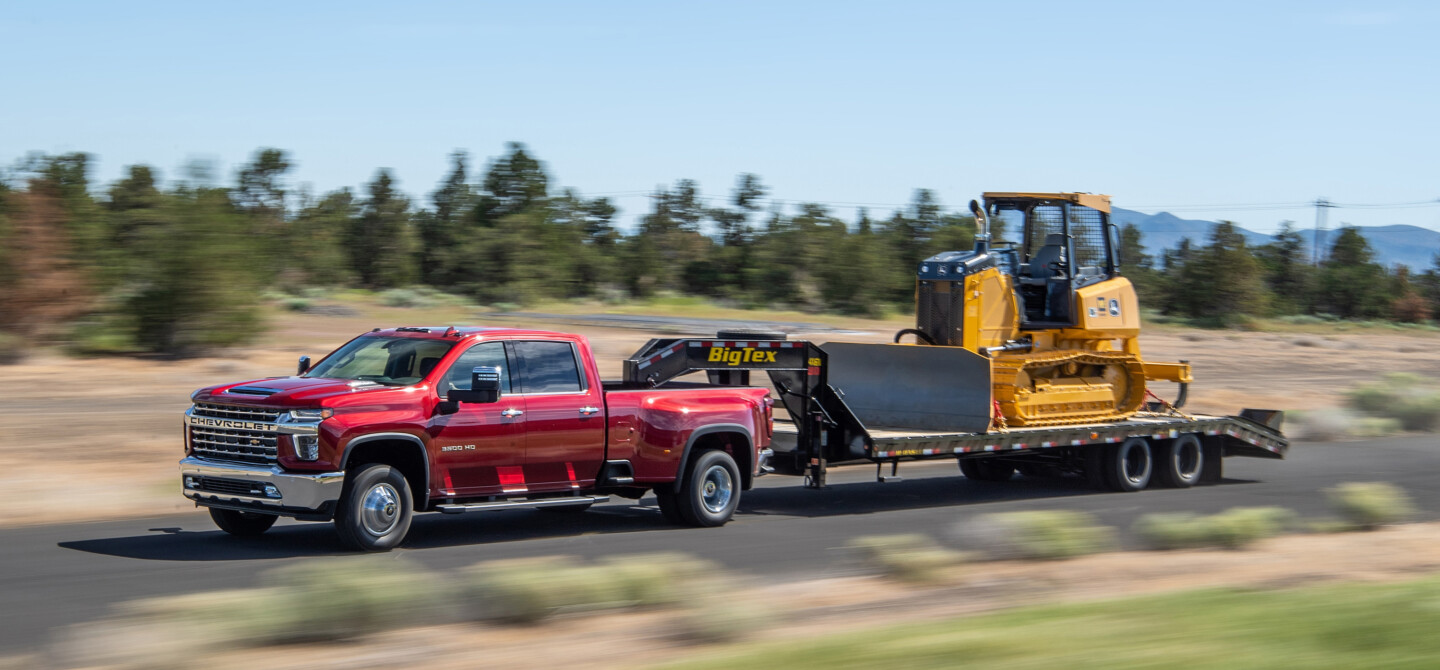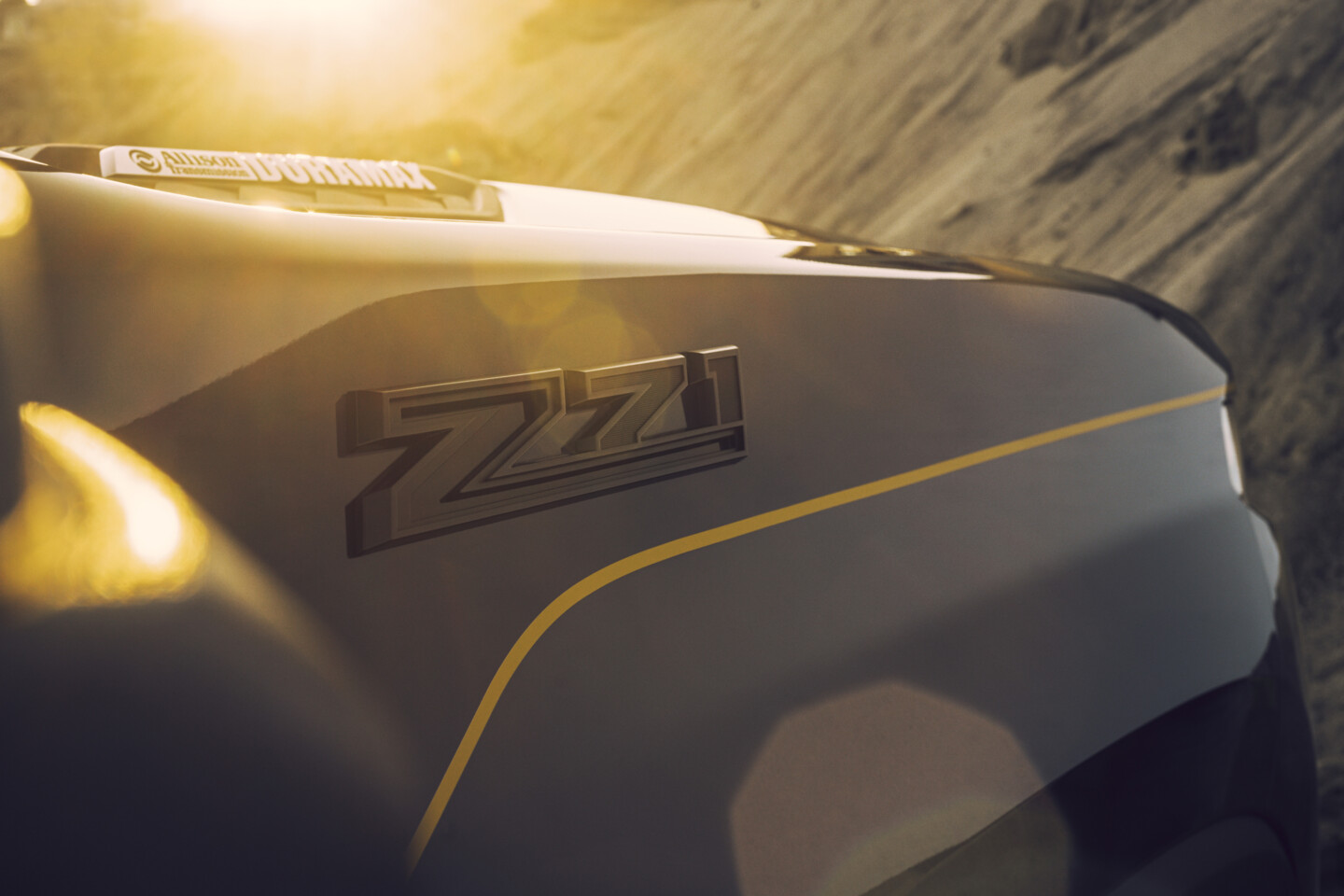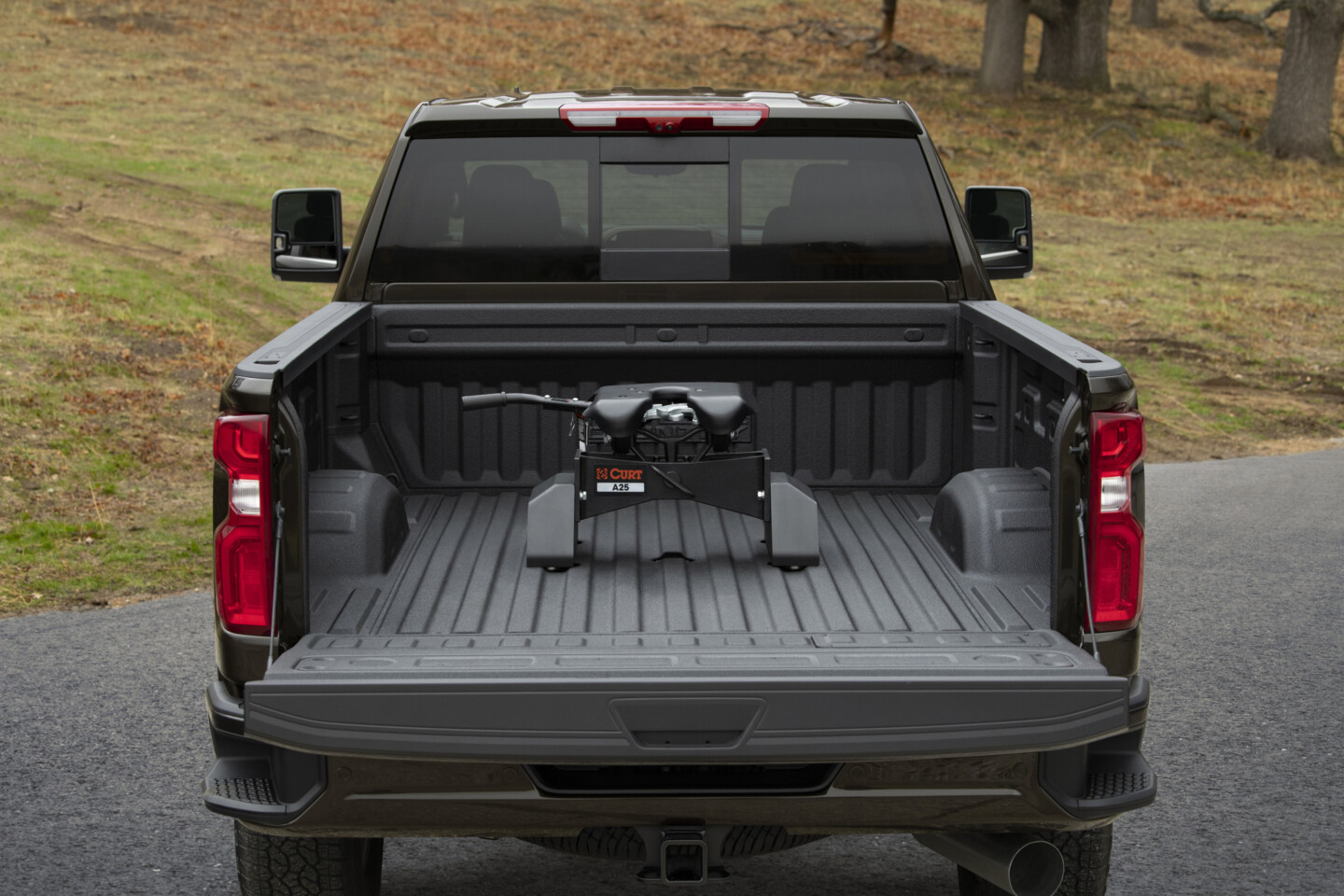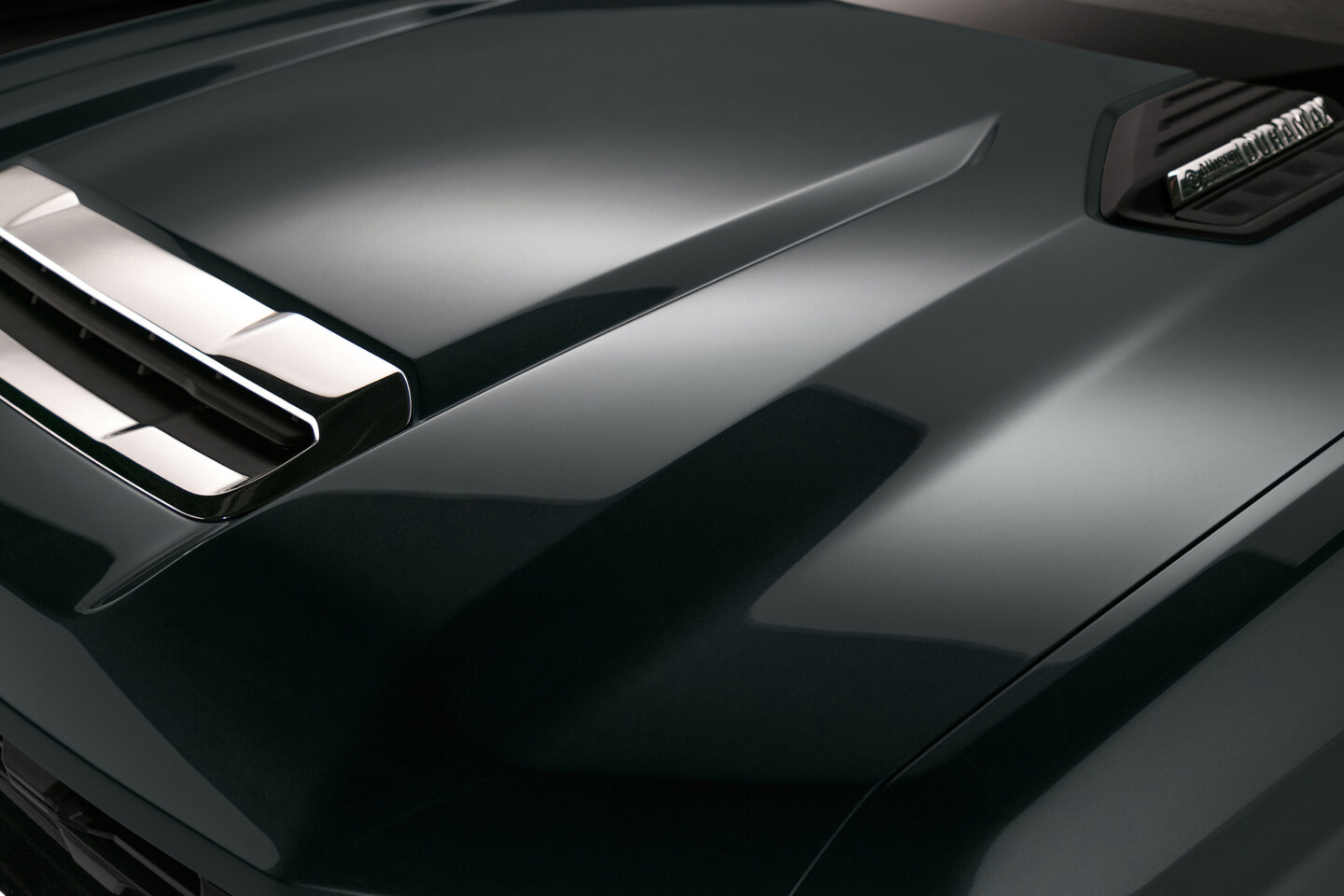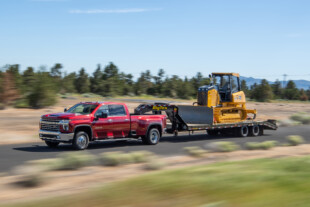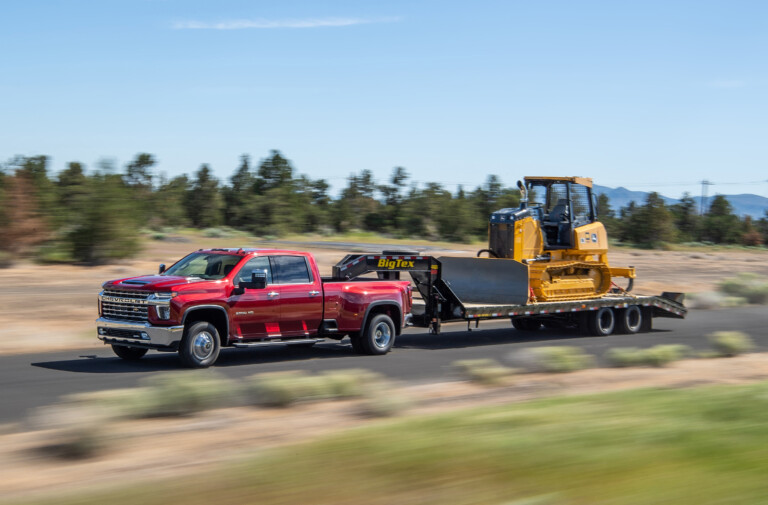If you’ve ever stood next to a Ram 2500, Chevy 2500HD, or Ford F-250, you know there’s something noticeably different about these trucks compared to their half-ton counterparts. These are heavy-duty (HD) 3/4-ton trucks, purpose-built for regular hauling, towing, and handling work that would push light-duty half-ton 1500 trucks to their limits. But if you’re not standing right next to one, how can you tell if a truck is an HD—especially if it’s heavily customized like the ones found at the SEMA Show? What separates an HD truck from a half-ton like the Ram 1500, Chevy Silverado, or Ford F-150?
This isn’t an exhaustive list, but here are a few things to look for, starting with the obvious.
1. Model Numbers, Badging, and Branding Tell the HD Story
The easiest way to identify a Heavy Duty truck is by checking the model badge:
- Ram 2500 and 3500 = HD
- Chevy Silverado 2500HD and 3500HD = HD
- Ford F-250, F-350, F-450 Super Duty = HD
Look for clear HD branding and badging:
- Ford says “Super Duty” across the front and tailgate.
- Chevy uses “2500HD” or “3500HD” badging.
- Ram trucks show “2500” or “Heavy Duty” on the hood or rear quarter.
- Diesel engine badging: “Cummins” for Ram, “Power Stroke” for Ford, and “Duramax” for Chevy/GMC
In contrast, half-ton trucks include:
- Ram 1500
- Chevy Silverado 1500
- GMC Sierra 1500
- Ford F-150
- Nissan Titan
- Toyota Tundra
2. Frame and Suspension: Bigger, Tougher, Stronger
Heavy Duty trucks are built on reinforced frames with upgraded suspension, larger axles, bigger brakes, and heavy-duty shocks. This beefier construction allows them to handle larger loads and serious towing tasks that would overwhelm half-tons.
3. HD Engines and Towing Capability
Heavy Duty trucks offer high-torque diesel engines (Cummins, Duramax, or Power Stroke) in addition to powerful gas options. Most customers prefer these diesel powerplants. If you see a Cummins, Duramax, or Power Stroke badge, it’s more than likely an HD truck, but not always. “Baby” Duramax and Power Stroke diesel engines can be found in the Silverado 1500 and F-150, respectively, represented by slightly different badging. However, there has never been a Cummins-powered Ram 1500, so a Cummins badge always indicates a heavy duty.
Towing capacities regularly exceed 15,000–20,000 pounds with proper equipment—far beyond what most half-tons can manage.
4. Ride Height and Tires
HD trucks generally sit higher and use larger, heavier-duty tires to accommodate their stronger underpinnings and provide greater clearance. You’ll also notice wider wheel arches, more aggressive fender profiles, and larger hoods.
5. Other Visual Cues: Mirrors, Configurations, Exhaust, Axles, Front Ends
HD trucks come with unique external features that often give them away at a glance:
- Tow Mirrors: Most Heavy Duty trucks are equipped with telescoping tow mirrors, offering a larger field of view for trailers. These mirrors often have dual glass, integrated turn signals, heating, and even cameras. While optional on some half-tons, they’re standard or common on HD models.
- Bed lengths: You won’t see factory HD trucks equipped with the short beds manufacturers put on their crew cab half-tons. You’ll see standard (approximately 6.5-foot) or long (approximately 8.0-foot) beds.
- Exhaust tips: Diesel-powered HD trucks often sport larger, downturned exhaust tips, usually around 4–5 inches in diameter. These help manage heat and emissions during heavy towing. You’ll also frequently see a DEF (Diesel Exhaust Fluid) filler neck beside the fuel cap — a sign of a modern diesel HD engine.
- Axle hubs: HD trucks often have full-floating eight-lug rear axles with large, protruding hubs. These heavy-duty setups are designed for high load-bearing without over-stressing the axle shafts. If you see eight-lug wheels, it’s an HD.
- Front ends: HD trucks have different front ends than their half-ton counterparts. This means different headlights, grilles, and styling. We think the Ram front ends could be the hardest to distinguish.
- Duallys, duh: Dual rear-wheel trucks from the factory are always heavy-duty trucks. If it’s a dually, it’s a Heavy Duty.
When trying to determine if a truck is an Heavy Duty model, it’s okay to just look at the badges. If that doesn’t work, scan for big tow mirrors, beefier exhaust tips, larger rear axles, taller stances, diesel badges, eight-lug wheels, and all the other cues. You just may impress someone someday. Now, can you tell the differences between gas and diesel HD trucks?


